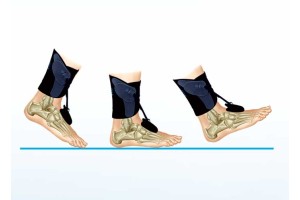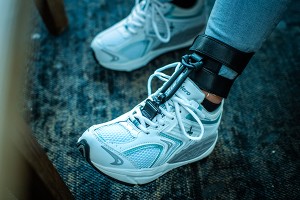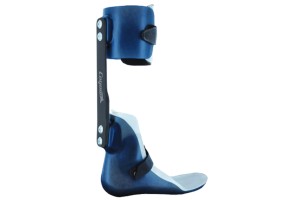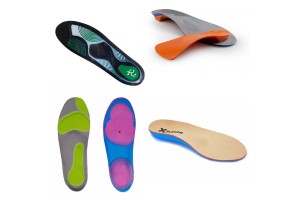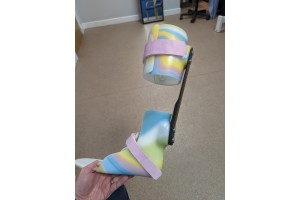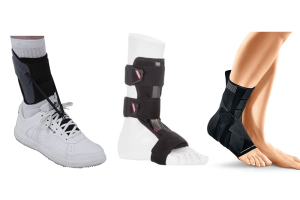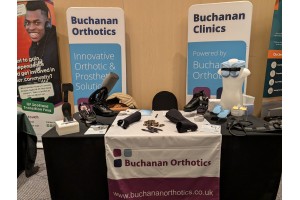Book an Assessment
Biomechanical Assessment
You're probably on reading this if you're not sure if you need a Biomechanical Assessment. Unfortunately we can't tell you over the internet whether it will or won't benefit you for sure, but we can tell you what happens in the assessment and what it usually aims to help.
The field of biomechanics in general deals with the effects of forces applied by muscles and gravity on the human body. A Biomechanical Assessment specifically examines the lower limbs to find any issues with alignment, structure and highlight any strengths or weaknesses. Due to the shear number of test known by our clinicians not every assessment will be the same and they will use their clinical judgement to perform the most appropriate tests.
The assessment should be taken by a medical professional and usually with access to high-tech equipment. The equipment can be used to help assess the forces in the body which helps us to see what pressures the body is experiencing when walking or running.
Book an Assessment
What Happens in a Biomechanical Assessment?
Static
The static assessment involves the clinician taking measurements and analysing your body while sitting or standing (this means that you’ll need to wear appropriate clothing such as shorts or a skirt).
Dynamic Assessments
The dynamic assessment is taken while you are often moving by taking video or foot pressure scans.
What do you look for in a static assessment?
During the static part of an assessment the clinician will look at your general body alignment when you are standing and not moving. This can help pin point postural issues and well as bony alignment of you legs. Often they will check to see how strong individual muscles are as well as what range of motion is available at each joint.
They will undertake a detailed assessment of the foot position when standing as well as perform some condition specific tests.
Generally we will be looking for differences and asymmetry between body segments.
What do you look for in a dynamic assessment?
This can take the form of two parts a visual assessment and digital assessment.
The Orthotist will perform a visual assessment of you gait or running sometimes this may be done by eye or we will also use video when required. They may also test your balance as well as different dynamic tasks again depending on what condition or symptoms your are having.
We also use an RS Scanner pressure plate which takes readings when someone walks or runs over it. About 500 images per second are taken which the clinician can then analyse on the computer. Mainly, these images are designed to show force, impulse and pressures on the body. Again, the aim is to understand how these forces work in your body and discover anything that could cause problems, either now or in the future.
Why Have a Biomechanical Assessment?
Why you should have a biomechanical assessment really depends on your situation. Appointments for biomechanical assessments are generally due to symptoms of pain or discomfort someone experiences. Since the lower limb area such as the knees and legs are very inter-connected, pain in one area can often be caused by another area so by investigating with a scanner we can better understand the imbalances in the body.
Book an Assessment
Through these assessments, we can look more closely at possible causes of foot, knee and back pain. The RS Scan gives us more information about the pressures people experience in their body which lets us further consider specific areas. If you're experiencing pain, the images taken with the RS Scanner will highlight specific pressure areas and we can understand further what can be the cause of the pain. During the appointment, we discuss with you what you're looking to achieve, take all necessary assessments and discuss any recommended treatment options.
Potential Treatments
The main outcome from getting a biomechanical assessment with us is to receive specialist Orthotic advice (if it’s needed), tips on how to self-manage a condition (such as certain stretches that can minimise injury) or discover tailor-made orthotic solutions which can help you move better.
The nature of the assessment (essentially assessing how you move and why) means that Orthotists use what they already know combined with just a bit more technical training to become fully able to carry out these assessments.
Options for treatment could include:
- Prescribing custom insoles,
- Recommending exercises,
- Footwear advice
Poor movement patterns can lead to painful injuries developing so it’s important that even if no significant issues you can still receive specialist advice early on.
For example, our analysis might tell us that insoles can help a patient’s movement pattern. Insoles specific to the patient can work to offset imbalances and support the necessary areas of the body.
You can book a biomechanical assessment with us in Glasgow or contact us for more information. Biomechanical Assessments are taken by fully qualified and experienced specialists in orthotics, registered with Health and Care Professions Council (HCPC).



